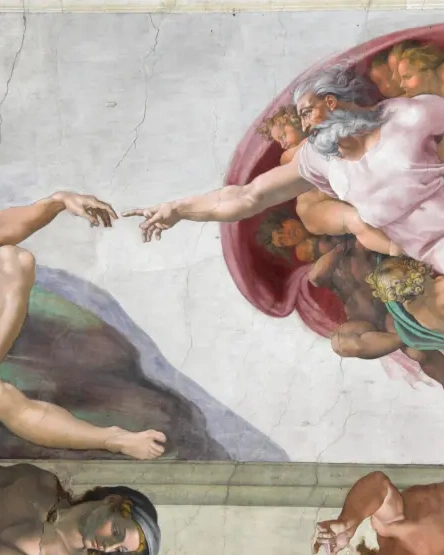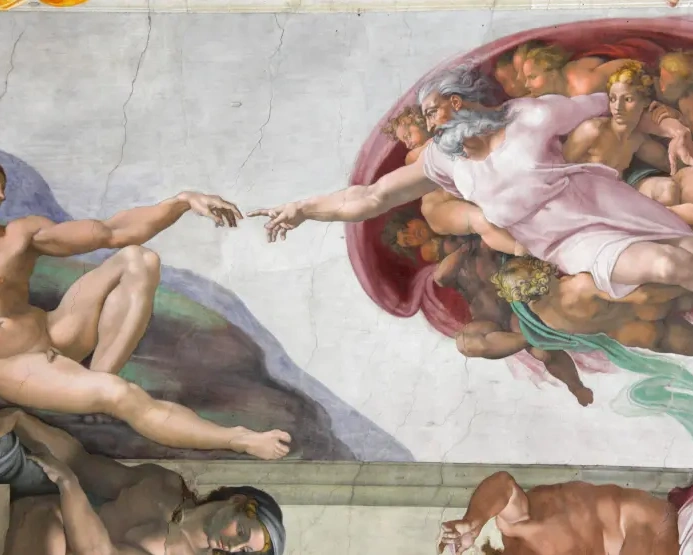Art Movements in Chronological Order: A Journey Through Time and Imagination


Art movements in chronological order
Art is not just a reflection of a moment; it is the heartbeat of an era, the voice of generations, and the vision of trailblazers. As we stand on the threshold of countless epochs, each with its unique narrative and aesthetic, a chronological exploration becomes more than just an academic exercise—it’s a journey.
Through this journey, we don’t merely observe colors, forms, or techniques; we immerse ourselves in the emotions, ideologies, and revolutions that molded them. From the ancient banks of the Nile to the bustling streets of modernDefinition: Modernità encompasses the historical period tha... More cities, from hallowed halls of museums to graffiti-laden alleyways, this blog post aims to be your compass.
As we traverse through the ever-evolving saga of art movements, prepare to witness the dance of time and imagination, and perhaps, see the world in a stroke of paint or the curve of a sculpture. So, dear reader, embark with us on this odyssey and let’s rediscover the world one art movement at a time.
Setting the stage: The essence of art through time
Throughout human history, art has been a window into the soul of societies, an embodiment of cultural ethos, and a chronicle of the ever-evolving human experience. Every era, with its unique challenges, aspirations, and zeitgeist, has found expression in the strokes of a brush, the chisel’s scrape, or the click of a camera. To journey through art movements is to time-travel, to sit beside our ancestors as they shared their stories, dreams, and reflections. And it’s not just about aesthetic evolution; understanding these movements offers insights into political shifts, technological innovations, and social revolutions.
Why understanding art movements is crucial to appreciating art
In all its glory, art is not just for the eyes; it’s an experience meant for the soul.
Recognizing the intricacies of various art movements enhances this experience. It’s akin to understanding the lyrics of a song in a foreign language; the melody might be captivating, but understanding the words adds depth. As we delve into art movements in chronological order, we’re not just learning about styles or techniques; we’re immersing ourselves in epochs of emotion, epochs that defined civilizations and continue to shape our modernDefinition: Modernità encompasses the historical period tha... More world.
Ancient and Classical Art Movements
Egyptian Art: More than just pyramids
Nestled along the banks of the Nile, ancient Egypt was a civilization of grandeur and mystique. Their art was deeply intertwined with their religious beliefs and afterlife rituals. Hieroglyphics adorned tomb walls, telling tales of pharaohs and gods. Statues, often colossal, were not mere decorative pieces but held symbolic meanings. And while the pyramids are their most iconic creations, Egyptian artistry is a vast canvas, rich with color, narrative, and purpose.
Greek Classical: Beauty in proportion and form
The Greeks brought a new philosophy to art – one that celebrated human form and sought perfection in proportion. The majestic temples, like the Parthenon, showcase their architectural genius, while sculptures such as the Discobolus capture the movement and anatomy with an accuracy that is awe-inspiring. This was an era where art was not just for deities but also celebrated the human experience, from its mythology to its athletics.
Roman Artistry: Mosaics, sculptures, and architectural marvels
Borrowing and building upon Greek foundations, the Romans introduced fresh perspectives. Their sprawling empire, with its diverse populace, found a common voice in art. Mosaics captured scenes of daily life with intricate detail; busts and statues commemorated both gods and mortals, often with a realism that makes them feel contemporaryContemporary, mirroring the German notion of "Zeitgenosse" -... More. The Colosseum, aqueducts, and the Pantheon stand testament to their architectural prowess, each structure a blend of beauty and function.
Gothic Splendor: Cathedrals and stained glass
Emerging in the heart of Medieval Europe, Gothic art and architecture were monumental in both scale and significance. Cathedrals soared towards the heavens, their spires piercing the skies. Intricate rose windows, with their stained-glass narratives, transformed sunlight into tales of devotion. It was an age where art aimed to inspire awe, drawing both the devout and the curious into a world where the divine seemed just a touch away.
Renaissance Rebirth: Da Vinci, Michelangelo, and the return to classics
A reawakening of classical knowledge and a thirst for innovation marked the RenaissanceOrigin: The term "Renaissance" was deeply influenced by the ... More. Cities like Florence became crucibles of creativity. Leonardo’s “Mona Lisa” and “The Last Supper” redefined portraiture and composition. Michelangelo’s frescoes in the Sistine Chapel and his sculpture “David” are masterpieces that captured the very essence of humanity. This was an age of exploration, not just of the world, but of the self and the cosmos, with art at its epicenter.
Baroque Drama: The age of extravagance and emotion
The Baroque era was theater on canvas, music, and stone. Artists like Caravaggio, with his dramatic use of light and shadow, brought biblical tales and mythological themes to vivid life. Architecture took a flamboyant turn, with structures like St. Peter’s Basilica exemplifying the grandeur of the time. Art became an experience, evoking emotions ranging from spiritual rapture to profound contemplation. It was a dance of the senses, a symphony of the soul.
Rise of the Modern Age
Neoclassicism: Drawing inspiration from antiquity
As the 18th century dawned, a renewed admiration for classical art and architecture surfaced. With the excavations of Pompeii and Herculaneum revealing treasures of the ancient world, artists, inspired by these discoveries, sought to infuse the precision and grandeur of the Greeks and Romans into their works. Paintings, sculptures, and buildings of the Neoclassical period, characterized by their symmetry and simplicity, became a reflection of the ideals of order and rationality.
Romanticism: Passion, nature, and individualism
In stark contrast to the structured confines of Neoclassicism, Romanticism was the wild, passionate heartbeat of the 19th century. It was an artistic rebellion. Painters like Turner and Delacroix depicted tumultuous seascapes and historical dramas, emphasizing emotion over precision. This was an era that celebrated the individual’s connection to nature, the raw power of emotion, and the boundless possibilities of human imagination.
Realism: The everyday becomes extraordinary
The mid-19th century brought with it a desire to capture the world as it was, warts and all. Moving away from the idealized depictions of earlier movements, Realism, led by artists like Courbet and Millet, presented everyday scenes and ordinary people with meticulous detail. It was an art movement that democratized subjects, allowing the farmer, the laborer, and the local marketplace to become stars on the canvas.
Breaking Boundaries in the 20th Century
Impressionism: Capturing fleeting moments and moods
As the name suggests, Impressionism wasn’t about detailed, realistic depictions. Instead, artists like Monet, Degas, and Renoir aimed to capture the essence, the ‘impression’ of a scene. Quick brush strokes, vibrant colors, and an emphasis on light characterized this movement. It was as if every canvas was a moment frozen in time, with all its transience and beauty.
Art Nouveau: Nature, curves, and decorative beauty
Emerging at the dawn of the 20th century, Art NouveauOrigin: Derived from the name of an exhibition gallery opene... More was a celebration of organic forms, flowing lines, and intricate patterns. Whether it was Mucha’s ethereal posters or Tiffany’s iconic lamps, the influence of nature was undeniable. Buildings, jewelry, furniture – the movement left its ornate mark on almost every facet of decorative art.
Cubism: Picasso, Braque and a new visual language
Challenging conventional perspectives, Cubism fragmented the world into geometric shapes. Artists like Picasso and Braque deconstructed and reassembled their subjects, providing multiple viewpoints within a single artwork. This avant-garde movement wasn’t just a stylistic choice; it was a radical rethinking of how reality could be represented on canvas.
Surrealism: Dreamscapes and the unconscious mind
Inspired by Freudian psychology and the mysteries of the dream world, Surrealism sought to bridge the gap between the real and the imaginary. Dali’s melting clocks and Magritte’s whimsical juxtapositions invited viewers to explore the labyrinth of the subconscious. It was art that defied logic, encouraging interpretations that were as varied as the dreams it portrayed.
Abstract Expressionism: The power of color and form
Born in the post-World War II era, Abstract Expressionism was less about portraying a tangible reality and more about expressing raw emotion. Jackson Pollock’s drip paintings, with their chaotic swirls and splatters, epitomized the movement’s spontaneous nature. Rothko, with his vast color fields, evoked profound emotional responses. It was an era where the process of creation was as significant as the final piece, where artists bared their souls on canvas.
Contemporary Movements and Beyond
Pop Art: Warhol, Lichtenstein, and the influence of mass culture
The mid-20th century saw the rise of consumer culture, and with it, Pop Art. Artists like Andy Warhol and Roy Lichtenstein took inspiration from everyday items, advertisements, and comic strips. Warhol’s Campbell’s Soup Cans or Lichtenstein’s comic-inspired pieces blurred the lines between high art and popular culture, making profound statements on the commercialized world we live in.
Minimalism: Less is more
Stripping away the excesses and complexities, Minimalism was about simplicity and purity. Artists like Agnes Martin and Donald Judd focused on basic shapes, clean lines, and unadorned surfaces. It was a movement that challenged viewers to find meaning and beauty in the bare essentials, emphasizing the power of negative space and the essence of form.
Digital Art Revolution: The pixel as a medium
As technology surged forward, art wasn’t far behind. The digital realm opened up a world of possibilities. Artists began using software and digital tools to create masterpieces, merging traditional techniques with the boundless potential of the virtual world. From digital paintings to interactive installations, art found a new frontier to conquer.
Street Art: From the alleys to the galleries
Once seen as mere vandalism, street art has evolved into a recognized and respected art form. Artists like Banksy and Shepard Fairey turned city walls into canvases, delivering powerful social commentaries. Murals, stencils, and graffiti became symbols of resistance, hope, and urban culture, turning the streets into open-air museums for all to experience.
Conclusion
The cyclical nature of art movements: What’s old is new again
As we traverse through the annals of art history, it’s evident that art movements often reflect, respond to, and rebel against their predecessors. They are like waves in an ocean, each one influenced by the one before, yet each unique and transformative in its own right.
Embracing change and looking forward to future artistry
Art, in its myriad forms, continues to evolve, mirroring the ever-changing human experience. As we stand on the cusp of a new era, it’s exhilarating to imagine the movements that are yet to emerge, the stories yet to be told, and the masterpieces yet to be created.
As we trace our fingers over the intricate lines and vivid colors of history, it’s clear that art is more than just a visual delight; it’s the heartbeat of civilization. Each movement we’ve explored stands as testament to humanity’s unyielding spirit, its desire to express, challenge, and reimagine.
From ancient sculptures to digital masterpieces, art has evolved, yet its essence remains unchanged – a reflection of society’s hopes, dreams, fears, and revolutions. While our chronological odyssey has reached its conclusion, the world of art is perennial, always waiting for the next visionary to pick up the brush, chisel, or stylus.
In the end, art’s true beauty lies not just in its past, but in its boundless future potential. As we step forward, let’s carry with us the lessons, inspirations, and stories from each era, knowing that every moment is a canvas waiting to be painted.